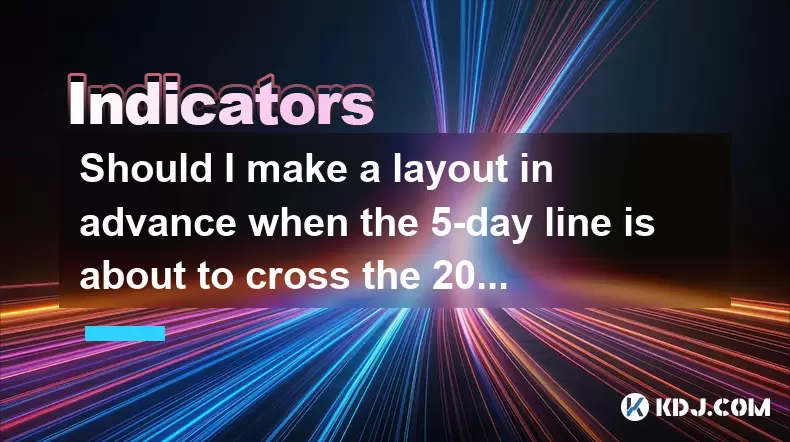-
 Bitcoin
Bitcoin $120400
1.77% -
 Ethereum
Ethereum $3615
7.90% -
 XRP
XRP $3.580
17.84% -
 Tether USDt
Tether USDt $1.001
0.06% -
 BNB
BNB $729.4
1.25% -
 Solana
Solana $179.9
5.04% -
 USDC
USDC $0.0000
0.01% -
 Dogecoin
Dogecoin $0.2311
8.22% -
 TRON
TRON $0.3226
4.04% -
 Cardano
Cardano $0.8490
12.85% -
 Hyperliquid
Hyperliquid $46.45
0.72% -
 Stellar
Stellar $0.4913
8.54% -
 Sui
Sui $4.027
2.00% -
 Chainlink
Chainlink $18.51
11.67% -
 Hedera
Hedera $0.2818
21.51% -
 Avalanche
Avalanche $24.03
7.40% -
 Bitcoin Cash
Bitcoin Cash $508.5
2.90% -
 Shiba Inu
Shiba Inu $0.00001496
3.24% -
 UNUS SED LEO
UNUS SED LEO $8.961
1.83% -
 Toncoin
Toncoin $3.264
3.13% -
 Litecoin
Litecoin $104.6
8.15% -
 Polkadot
Polkadot $4.389
6.11% -
 Uniswap
Uniswap $9.924
10.63% -
 Monero
Monero $337.9
0.49% -
 Pepe
Pepe $0.00001376
2.79% -
 Bitget Token
Bitget Token $4.830
2.46% -
 Ethena USDe
Ethena USDe $1.001
0.05% -
 Dai
Dai $1.000
0.02% -
 Aave
Aave $325.2
1.66% -
 Bittensor
Bittensor $423.7
-0.85%
Should I make a layout in advance when the 5-day line is about to cross the 20-day line?
Traders monitor the 5-day and 20-day moving averages for potential golden or death crosses, using historical patterns and market context to decide if preparing a layout in advance is wise.
Jun 29, 2025 at 03:14 pm

Understanding the Significance of the 5-Day and 20-Day Moving Averages
In technical analysis, moving averages are essential tools used by traders to identify trends and potential reversals. The 5-day moving average and 20-day moving average are particularly popular among short-term traders due to their sensitivity to price changes. When these two lines approach a cross—either bullish (golden cross) or bearish (death cross)—it often signals a shift in momentum. Traders frequently ask whether they should prepare for such events by making a layout in advance.
A golden cross, where the 5-day line crosses above the 20-day line, is typically seen as a buy signal, indicating that the asset may enter an uptrend. Conversely, a death cross, where the 5-day line crosses below the 20-day line, suggests a downtrend and is often interpreted as a sell signal. However, these signals are not foolproof and must be analyzed within the broader context of market conditions.
What Does "Making a Layout" Mean in Trading Context?
The term "making a layout" refers to preparing trading strategies or positions in anticipation of a specific event—in this case, the crossover of the 5-day and 20-day moving averages. This preparation can involve setting up entry points, stop-loss levels, profit targets, or even allocating funds ahead of time. Some traders prefer to act preemptively based on historical patterns, while others wait for confirmation before executing trades.
This strategy requires understanding how reliable such crossovers have been historically for the particular cryptocurrency being traded. For instance, assets with high volatility might experience frequent false signals, making premature layouts risky. Therefore, analyzing past performance and backtesting becomes crucial when deciding whether to make a layout.
How to Identify Potential Crossover Points in Advance
To anticipate a crossover between the 5-day and 20-day moving averages, traders can monitor the proximity of the two lines using charting tools available on platforms like TradingView, Binance, or CoinMarketCap. These tools allow users to plot both moving averages simultaneously and observe when they converge.
Here’s how you can do it:
- Open your preferred trading platform and select the cryptocurrency pair you're interested in.
- Apply both the 5-day and 20-day moving averages to the chart.
- Adjust the time frame to daily (1D) if you’re looking at medium-term signals.
- Observe the distance between the two lines and note any narrowing trend.
- Use alerts or notifications to track when the lines get close to crossing.
By keeping an eye on these indicators, you can better assess whether a crossover is imminent and decide whether to start laying out your trade plan.
Factors That Influence the Reliability of Moving Average Crossovers
While moving average crossovers are widely used, their effectiveness can vary depending on several factors:
- Market Volatility: Cryptocurrencies are known for their volatility, which can lead to false signals. During highly volatile periods, the 5-day line may briefly cross the 20-day line without sustaining the trend.
- Volume: A strong crossover is often accompanied by a surge in trading volume. If volume increases during the crossover, it adds credibility to the signal.
- Price Action Confirmation: Waiting for candlestick patterns or other technical indicators (like RSI or MACD) to confirm the direction can reduce the risk of acting on a false signal.
- Time Frame: Shorter time frames increase sensitivity but also increase noise. Using daily charts tends to provide more reliable signals than hourly or minute-level charts.
These elements should be considered when evaluating whether to make a layout based solely on an impending crossover.
Strategic Considerations Before Making a Layout
If you decide to make a layout before the 5-day line crosses the 20-day line, consider the following steps:
- Define Your Entry Point: Decide whether you’ll enter the trade before the actual crossover or wait for confirmation. Entering early can capture more gains but carries higher risk.
- Set Stop-Loss Levels: Always determine where you will exit the trade if the market moves against you. A common practice is placing the stop just beyond recent swing highs or lows.
- Establish Profit Targets: Based on historical price movements or Fibonacci extensions, set realistic take-profit levels to lock in gains.
- Use Position Sizing Wisely: Don’t allocate too much capital based on a single indicator. Diversify your exposure and manage risk effectively.
By incorporating these elements into your layout, you enhance your chances of managing risk and optimizing returns.
Frequently Asked Questions
Q: Can I rely solely on moving average crossovers for trading decisions?
No, moving average crossovers should be used in conjunction with other indicators and analysis methods. They work best when combined with volume analysis, candlestick patterns, and trendlines.
Q: What time frame is most suitable for tracking 5-day and 20-day moving averages?
Daily (1D) charts are generally the most effective for observing these crossovers. They filter out short-term noise and provide clearer trend signals.
Q: Are golden crosses always bullish and death crosses always bearish?
Not necessarily. In some cases, especially in sideways markets, these crossovers can produce misleading signals. It's important to evaluate the broader market environment before taking action.
Q: How far in advance should I prepare my layout before the crossover occurs?
It depends on your trading style. Day traders may wait until the crossover is confirmed, while swing traders might begin planning one or two days in advance based on proximity and supporting indicators.
Disclaimer:info@kdj.com
The information provided is not trading advice. kdj.com does not assume any responsibility for any investments made based on the information provided in this article. Cryptocurrencies are highly volatile and it is highly recommended that you invest with caution after thorough research!
If you believe that the content used on this website infringes your copyright, please contact us immediately (info@kdj.com) and we will delete it promptly.
- Bitcoin, Cloud Mining, Crypto Wealth: Riding the Bull Run in Style
- 2025-07-18 12:30:12
- Ethereum Gas Fees, ERA Airdrop: A New Yorker's Take on Crypto Chaos
- 2025-07-18 12:50:12
- Bitcoin, Altcoins, and the Crypto Market: Navigating Trump's Crypto Ventures and the Evolving Digital Landscape
- 2025-07-18 12:50:12
- Bitcoin Holdings and the Smarter Web: A Match Made in Digital Heaven?
- 2025-07-18 12:10:12
- Bitcoin, MSTR & Saylor's Strategy: A Winning Trifecta?
- 2025-07-18 08:30:13
- Bitcoin Mortgages Down Under: A New Wave in Australian Homeownership?
- 2025-07-18 08:50:12
Related knowledge

Advanced RSI strategies for crypto
Jul 13,2025 at 11:01am
Understanding the Basics of RSI in Cryptocurrency TradingThe Relative Strength Index (RSI) is a momentum oscillator used to measure the speed and chan...

Crypto RSI for day trading
Jul 12,2025 at 11:14am
Understanding RSI in the Context of Cryptocurrency TradingThe Relative Strength Index (RSI) is a momentum oscillator used to measure the speed and cha...

Crypto RSI for scalping
Jul 12,2025 at 11:00pm
Understanding RSI in the Context of Crypto TradingThe Relative Strength Index (RSI) is a momentum oscillator widely used by traders to measure the spe...

What does an RSI of 30 mean in crypto
Jul 15,2025 at 07:07pm
Understanding RSI in Cryptocurrency TradingRelative Strength Index (RSI) is a momentum oscillator widely used in cryptocurrency trading to measure the...

What does an RSI of 70 mean in crypto
Jul 13,2025 at 06:07pm
Understanding the RSI Indicator in Cryptocurrency TradingThe Relative Strength Index (RSI) is a widely used technical analysis tool that helps traders...

Does RSI work in a bear market for crypto
Jul 16,2025 at 01:36pm
Understanding RSI in Cryptocurrency TradingThe Relative Strength Index (RSI) is a momentum oscillator used by traders to measure the speed and change ...

Advanced RSI strategies for crypto
Jul 13,2025 at 11:01am
Understanding the Basics of RSI in Cryptocurrency TradingThe Relative Strength Index (RSI) is a momentum oscillator used to measure the speed and chan...

Crypto RSI for day trading
Jul 12,2025 at 11:14am
Understanding RSI in the Context of Cryptocurrency TradingThe Relative Strength Index (RSI) is a momentum oscillator used to measure the speed and cha...

Crypto RSI for scalping
Jul 12,2025 at 11:00pm
Understanding RSI in the Context of Crypto TradingThe Relative Strength Index (RSI) is a momentum oscillator widely used by traders to measure the spe...

What does an RSI of 30 mean in crypto
Jul 15,2025 at 07:07pm
Understanding RSI in Cryptocurrency TradingRelative Strength Index (RSI) is a momentum oscillator widely used in cryptocurrency trading to measure the...

What does an RSI of 70 mean in crypto
Jul 13,2025 at 06:07pm
Understanding the RSI Indicator in Cryptocurrency TradingThe Relative Strength Index (RSI) is a widely used technical analysis tool that helps traders...

Does RSI work in a bear market for crypto
Jul 16,2025 at 01:36pm
Understanding RSI in Cryptocurrency TradingThe Relative Strength Index (RSI) is a momentum oscillator used by traders to measure the speed and change ...
See all articles

























































































